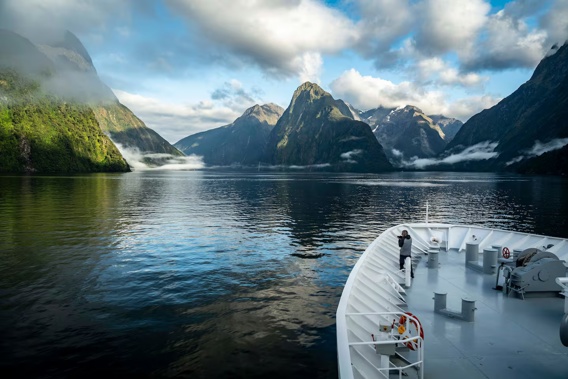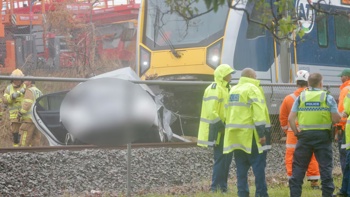
Scientists have discovered evidence of ancient landslide-triggered tsunamis in southern lakes – including one of the largest such events recorded to date.
Their newly published findings shed critical new light on a natural hazard that’s been poorly understood in New Zealand, but which nonetheless poses a major risk to people.
Geological records of past earthquakes indicate three-in-four chances of the South Island’s sprawling Alpine Fault rupturing within the next 50 years – and most likely with an earthquake as strong as magnitude 8.0.
With that has come the need to learn more about “secondary” hazards such as lake tsunamis, typically generated when landslides from nearby river deltas or slopes suddenly push vast volumes of material into the water.
While such events were rare, they could also be disastrous: one new study suggested that a landslide-triggered tsunami in Milford Sound could cause as many as 3500 casualties if the fast-moving wave hit in peak tourist season.
In November 2022, a 5.6 earthquake linked to unrest at Lake Taupō sent a small tsunami towards the town’s foreshore, ripping up bollards and damaging two boats.
In the latest study, a team of researchers mapped four South Island lakes - Rotoroa, Rotoiti, Brunner, and Mapourika – for signs of mass movements caused by past underwater landslides.
Using a boat-mounted, multi-beam echo-sounder, the scientists created high-resolution, three-dimensional models of each of the lakebeds.
The results - cataloguing some 86 previously undiscovered mass-movements - showed 16 were big enough to trigger tsunamis and indicate these events may be more than they’d first expected.

This image shows material from a past landslide at the bottom of Lake Rotoroa - likely caused by the collapse of a nearby river delta - as revealed by recent surveying. Image / Katie Hughes
They included a massive delta collapse at Lake Rotoroa, which involved the displacement of nearly 50 million cu m of sediment.
That made it the largest of its kind ever recorded in a New Zealand lake – and dwarfed similar events documented in other parts of the world.
The research also revealed that river deltas, rather than the surrounding mountains, were the most common source of these large-volume landslides – challenging what scientists had long assumed.
The study’s lead author, Victoria University postgraduate researcher Katie Hughes, said the findings showed our famously active tectonic environment came with a higher lake tsunami hazard.
“The findings also show that lake tsunamis have the potential to occur in a range of different lakes in New Zealand.
“Given the high visitor numbers to the country’s picturesque lakes and fjords, it is vitally important that in-depth hazard assessments were carried out.”
Study co-author Professor Sean Fitzsimons, of Otago University, said to do this, “we need more quantitative and detailed research on past occurrences of lake tsunamis, particularly linking the magnitude and frequency of past lake tsunami to seismic activity”.

A recent study estimated a major lake tsunami within Milford Sound could cause as many as 3500 casualties if it struck at peak tourist season. Photo / Douglas Gimesy
The research marked the first part of a wider project led by Victoria and Otago universities, with the scientists now reconstructing the timing and magnitude of the tsunamis they uncovered.
Another co-author, Associate Professor Jamie Howarth of Victoria University, said the limited amount of research to date had likely led to lake tsunamis being underappreciated in hazard planning – not to mention lower public awareness about the threat.
“We also hope the findings will increase community awareness of lake tsunami, particularly for those spending time around any of New Zealand’s many beautiful lakes,” Howarth said.
“When recreating on the lake shorelines you should move away from the shoreline and to higher ground if you experience strong earthquake staking.
“The ‘long or strong: get gone’ message applies to lakes as well as coastlines.”
Jamie Morton is a specialist in science and environmental reporting. He joined the Herald in 2011 and writes about everything from conservation and climate change to natural hazards and new technology.
Take your Radio, Podcasts and Music with you









